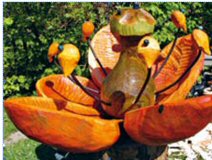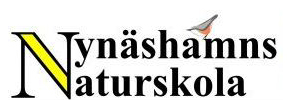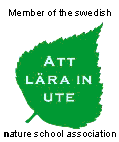|

BIOLOGICAL THEMES
Lifecycle of plants for grade 1 to 9
40 exercises

With a continuing urbanisation, people’s life environment changes and causes more and more pupils having less contact with the countryside and other natural areas, which makes them losing contact with nature.
Working actively is today necessary for pupils to develop contact with the nature, and especially in urban areas. Since the sense of nature is an important aspect concerning sustainable development, it is necessary that everybody participates and takes responsibility. Striving towards sustainable development and with a desire to really do something, are the reasons for this folder being published for the teachers in Nynäshamn.
The folder layout consists of an introduction in chapter 1 containing the steering documents, central terms, the pedagogical idea and how to use the folder. It describes the steering documents, which are the curriculum and the environmental quality goals, as well as the central terms, which are sustainable development and learning towards sustainable development. The purpose is for the reader to get an understanding of the underlying commitment of the plants’ lifecycle.
The educational/didactical idea consists of five steps, where the first four steps are the basic ideas and future beliefs of the Nature School Organisation. The steps are included in the concept “to find the path”, which consists of Experiencing with all senses, Discovering diversity, Understanding the connections in the nature and Insights of knowledge about the lifecycle of nature. A fifth step has been added to this folder, i.e. Activity, which means achieving skills and insights to act.
For example, the section “How to use the folder” illustrates how to make groupings.
Chapter 2 contains discoveries, experiences and understanding of the plants’ lifecycle. The different sections follow the years of the plants or the sequence of cultivation, i.e. Seeds, Plants, Trees, Pollination, Soil, Seed Dispersal. The chapter summarises with examples of outdoor lessons all the year around for the grades 1-3, 4-6 and 6-9.
Chapter 3 discusses and suggests how teachers can move on with their teaching about insights and activity. Achieving understanding from experiences and discoveries is part of the learning for sustainable development. The understanding must also be put in a bigger context, which requires discussions about ideas and values about the surrounding or global environment. Insights mean becoming aware that understanding interacts with outer conditions, and that can prepare the pupils for their own individual action. Three important discussions about the lifecycle of plants in a broader perspective are part of the chapter. The first is about food and the farmer’s role in the landscape with questions such as: What defines organic farming? How is the agriculture affected by the food production? The other discussion is about ecological footprints with questions such as: What is an ecological footprint? How is the footprint connected with biodiversity?
A third discussion visualises biodiversity and the ecosystem services. The questions here are about: What are ecosystem services?
Which ecosystem services are directly involved in the food production? A short summary is illustrated for each question, with reference to websites for the teacher to find more information. Examples of some activities connected to the discussion are also given.






